Featured Comment:
“I made this today and it was sooo good omg! I will be making this a bunch of times 🙂”
– Ming
What is Edamame?
Edamame (枝豆) might surprise you with their bright green exterior, but make no mistake, these are actually young, unripe soybeans. As edamame ripens, they transform into the more familiar beige soybeans.
In recent years, dedicated edamame varieties have been bred, and more than 400 varieties exist. In Japan, edamame is typically enjoyed simply by boiling them and sprinkling them with a touch of salt.
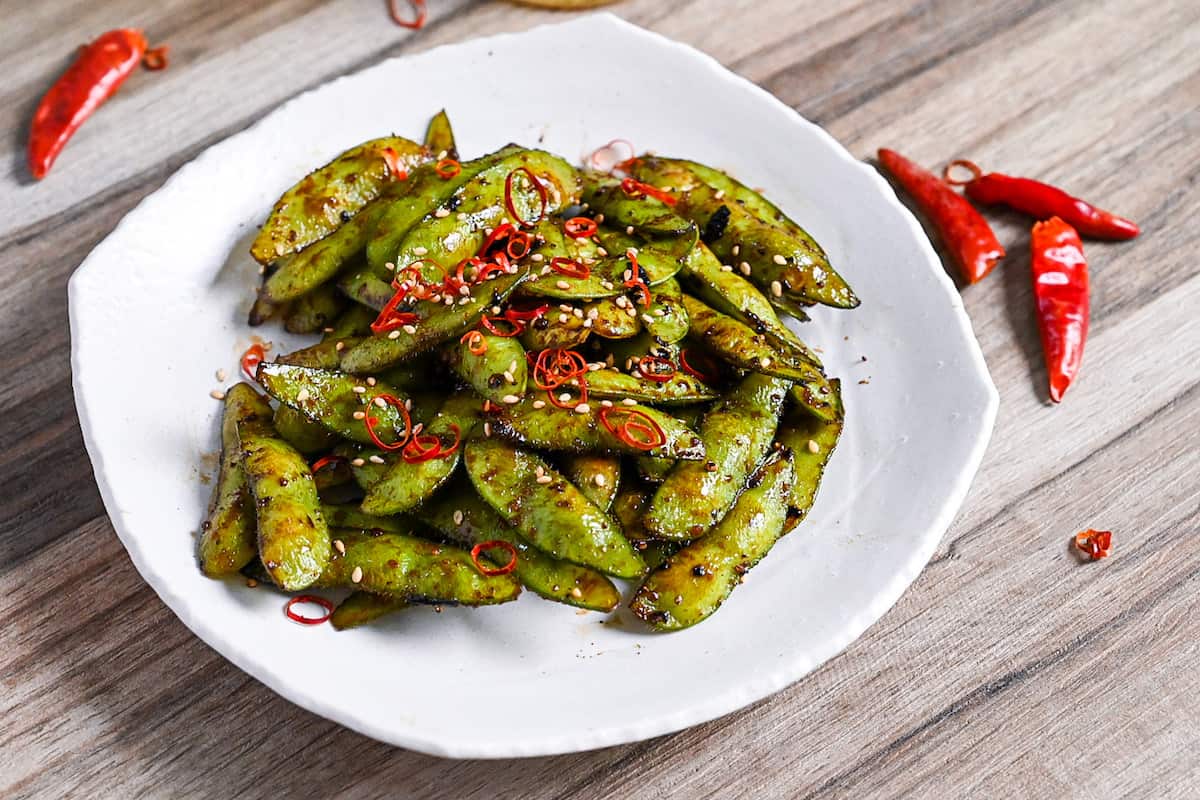

How I Developed This Recipe
In Japan, edamame is usually boiled in salted water, which is a simple yet delicious treat. However, in this recipe, I’ve taken it a step further to create an appetizer that’s a bit more indulgent and flavorful.
I tossed the fried edamame in a mixture of oyster sauce and garlic, creating a savory, umami-rich coating that’s really hard to resist.
This dish is perfect for an evening snack, and goes well with a cold drink or as a starter to a larger meal!
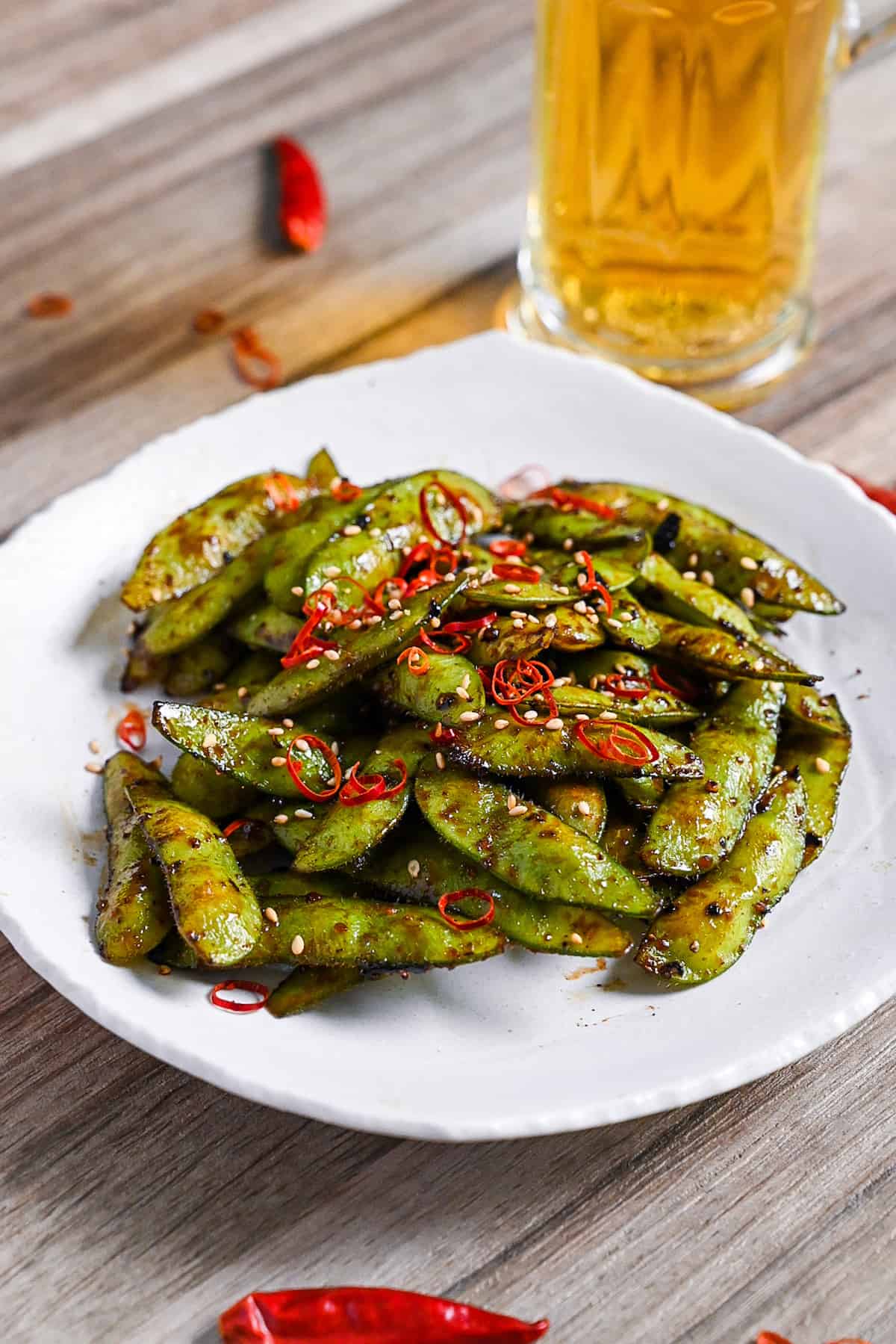
Types of Edamame You Can Buy
There are various forms of edamame available for purchase at supermarkets, each with its own benefits and uses.
- Raw: Raw edamame beans may not be as popular due to the extra step of preparation they require: trimming and boiling in salted water. Nonetheless, this process is rather simple and quick. Instructions on how to prepare raw edamame are included in my recipe.
- Frozen: Frozen edamame offers an advantage in terms of convenience. They are typically already trimmed and blanched, reducing the boiling time to a mere couple of minutes compared to the 5-7 minutes required for fresh edamame. Another benefit of frozen edamame is its long shelf life.
- Precooked: Precooked edamame are ready to eat straight out of the package, making them the ultimate convenience. They can also be used in this recipe, just add them straight to the pan.
Each of these types caters to different needs and time constraints, so it’s up to you to choose the most suitable one based on your preferences and the specific situation.
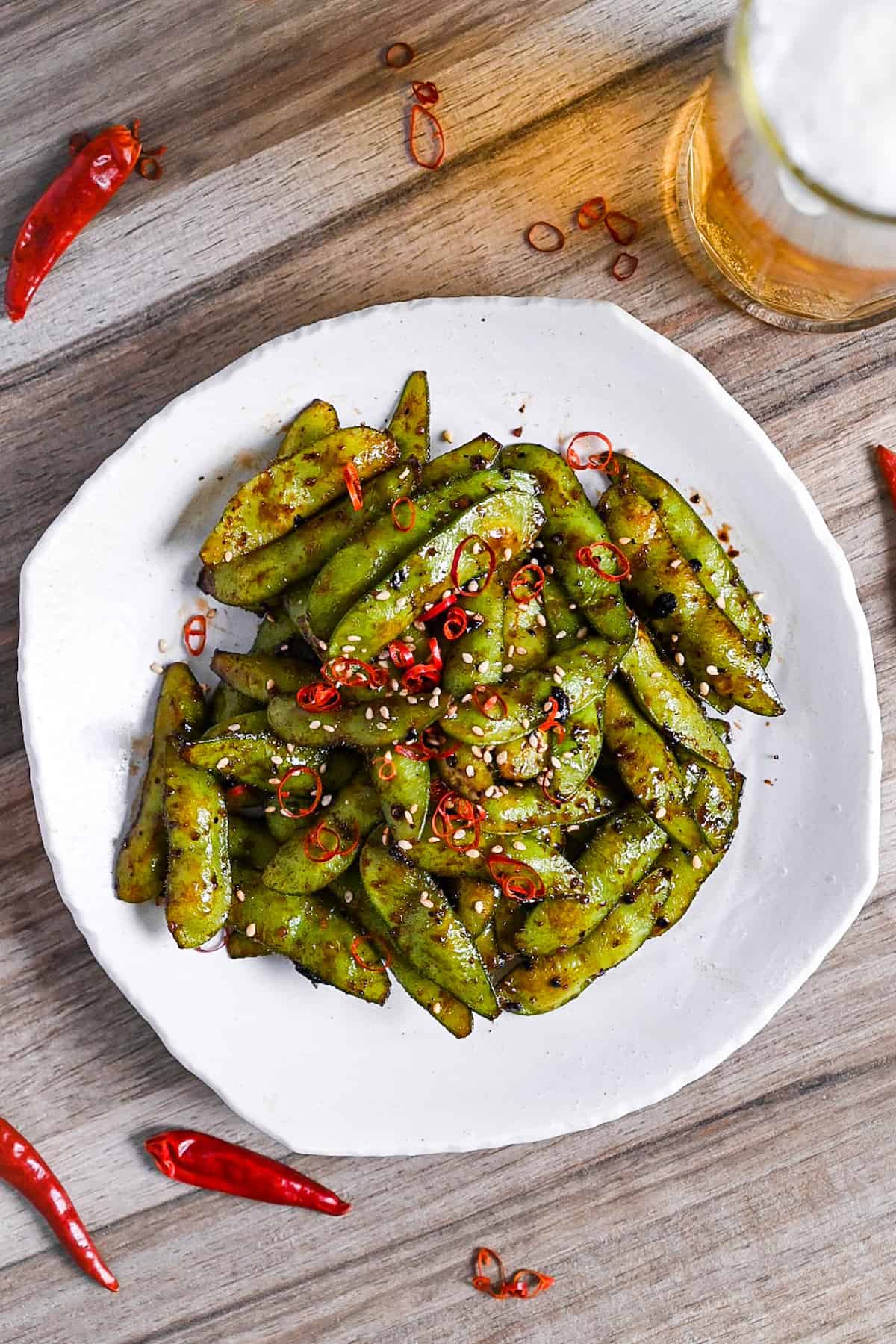
Visual Walkthrough & Tips
Here are my step-by-step instructions for how to make Stir-fried Edamame at home. For ingredient quantities and simplified instructions, scroll down for the Printable Recipe Card below.
Start by bringing a pot of salted water to a boil over medium heat. When boiling edamame, they need quite a lot of salt to bring out the flavor of the beans. For every 1 liter of water, I use 10g salt.
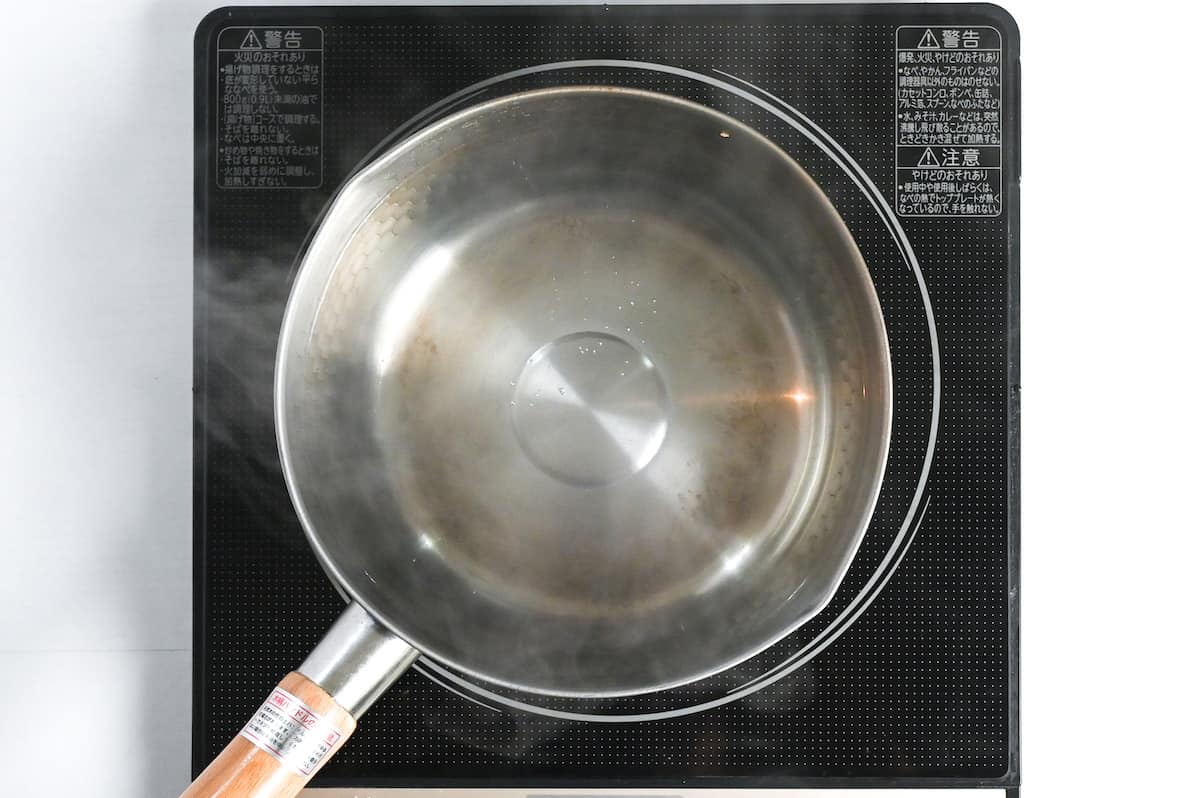
While you are waiting for the water to boil, wash the edamame in a bowl of cold water and trim the ends of the pods with scissors.
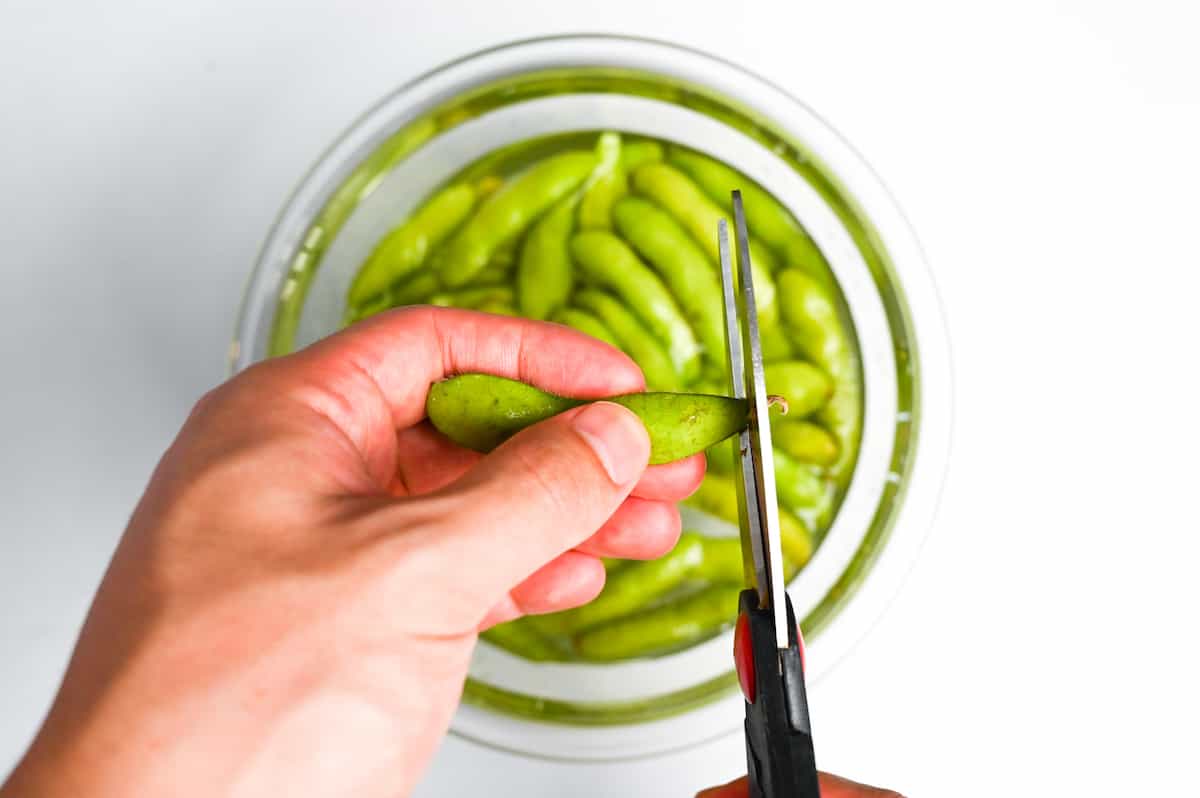
Drain the water and rub the surface with salt. This step exfoliates the surface of the pods and removes the hairs which in turn, helps the edamame absorb more flavor.
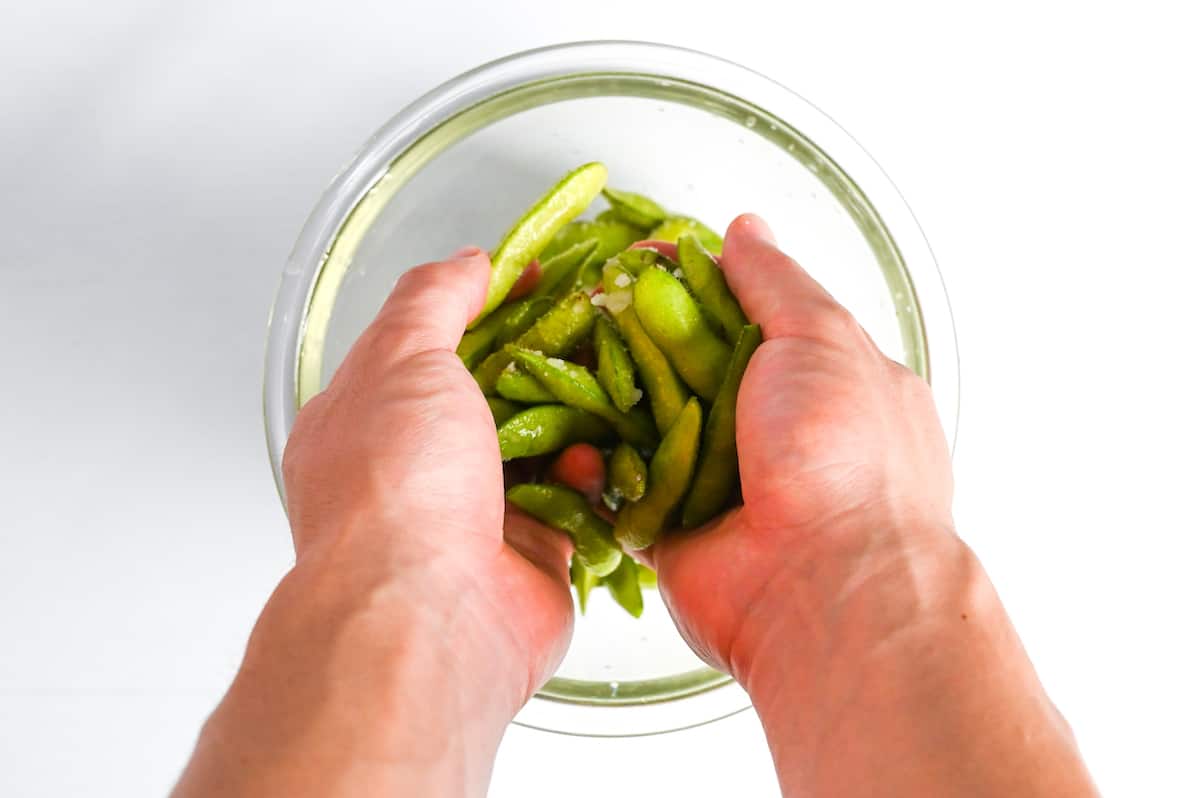
Add the edamame once the water is boiling and cook for 5-7 minutes. If using frozen edamame, check the packaging for the cooking times. Generally, frozen edamame is parboiled and only takes 1-2 minutes to cook from frozen.
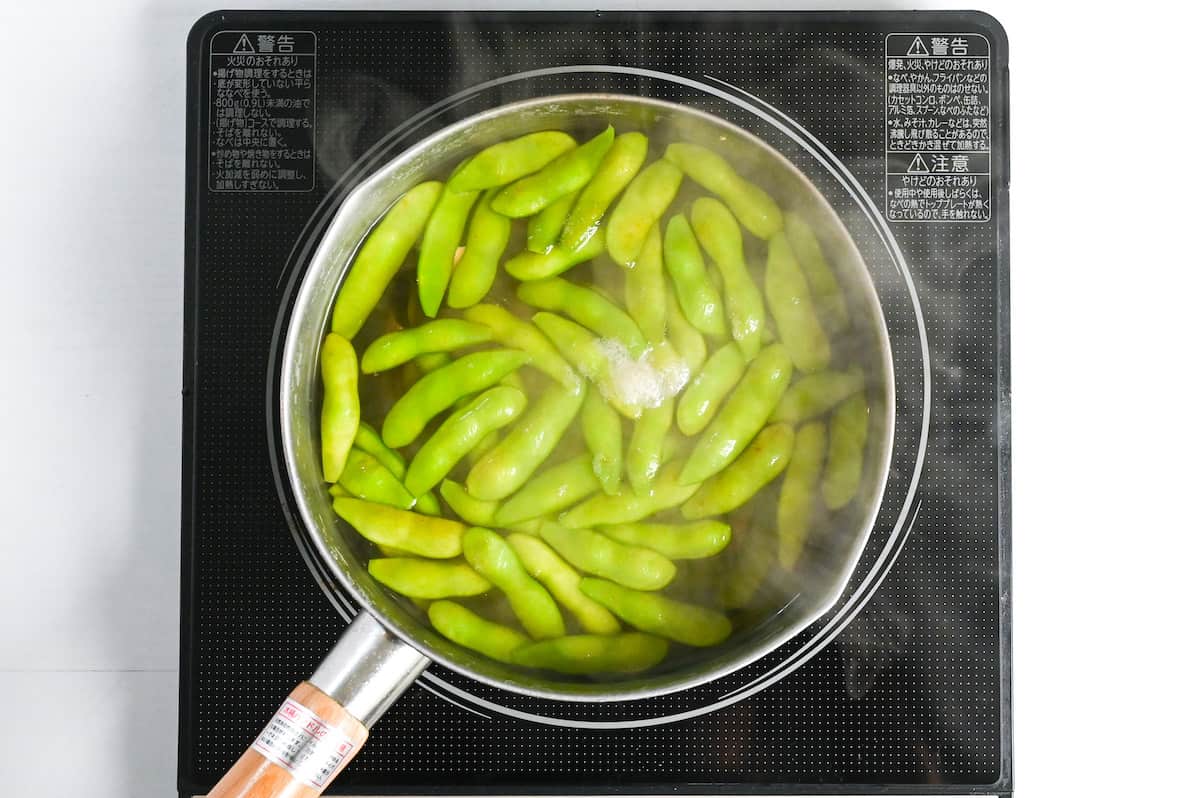
Once cooked, pour the edamame into a sieve to drain and shake to remove the excess water.
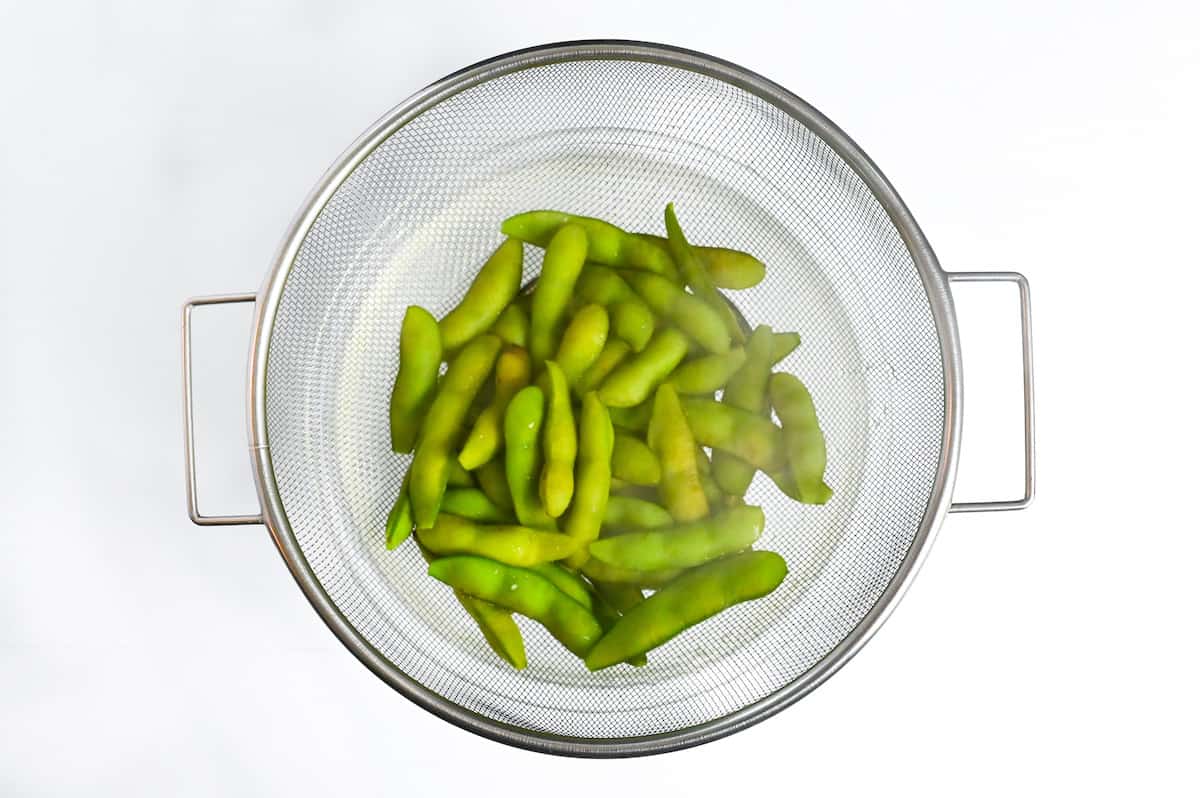
Heat a wok or frying pan on medium. Once hot, add sesame oil and the boiled edamame.

Add the oyster sauce and garlic paste, then stir fry for about 3 minutes or until the sauce becomes glossy and sticks to the surface of the pods.
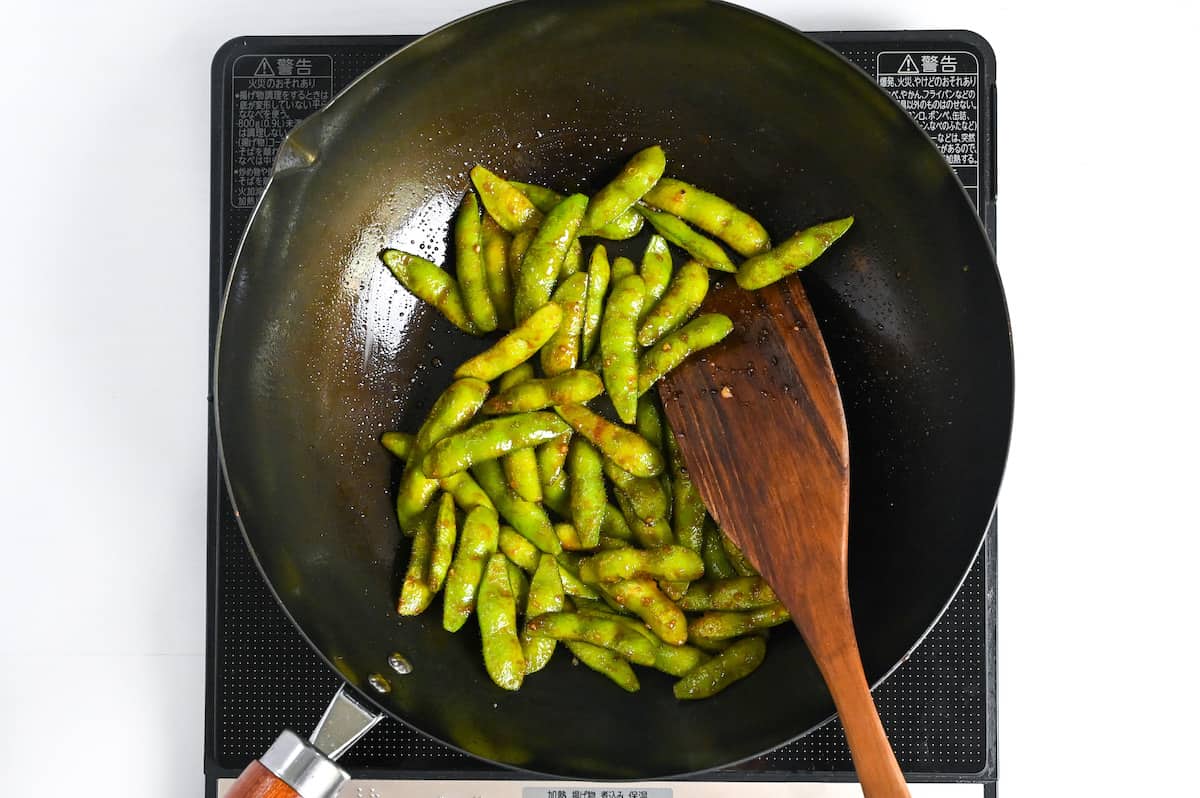
Turn off the heat, sprinkle with freshly ground black pepper and mix well.
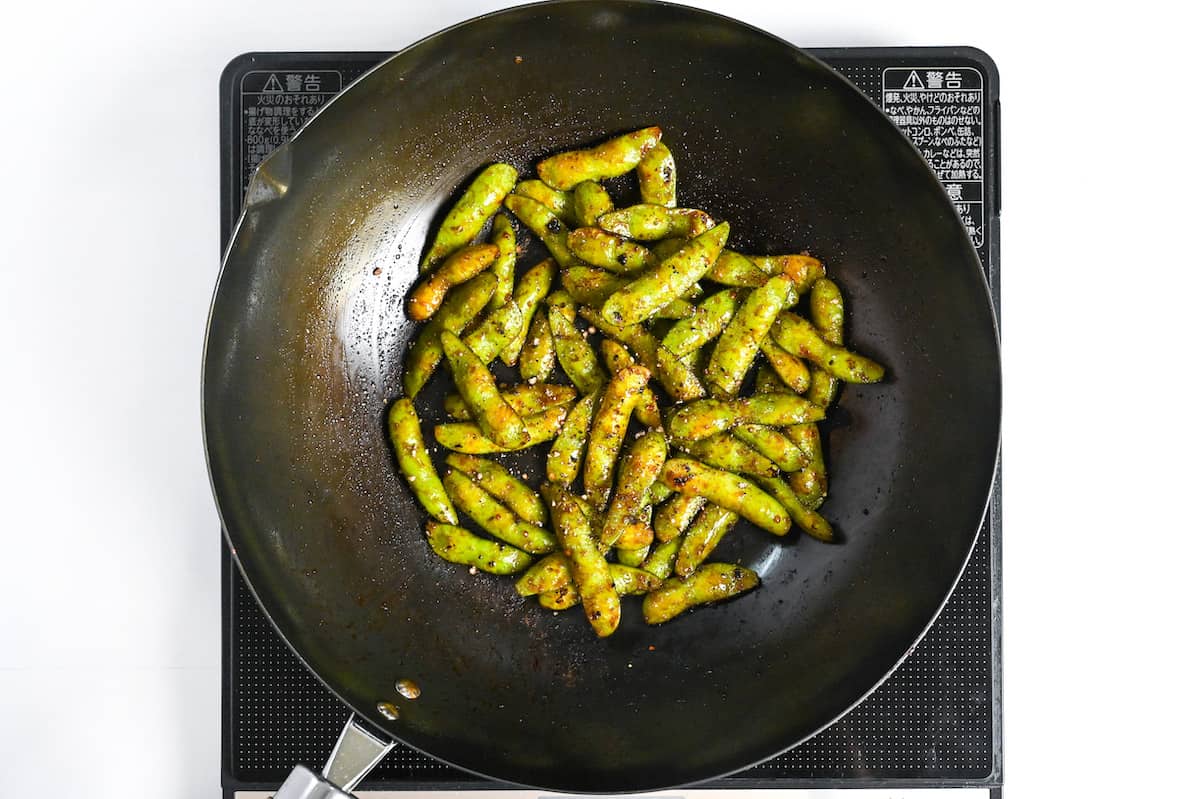
If you like, you can garnish with sesame seeds or finely chopped dry chili for a spicy kick!
Enjoy!
Jump to Full Recipe MeasurementsHow to Store
Edamame beans, like many fresh vegetables, tend to lose their flavor rapidly once they are harvested. To preserve their flavor, they can be boiled and subsequently frozen. This method at home allows for about a month of storage.
However, if you’ve prepared stir-fried edamame following this recipe, it is generally not advisable to store it. From personal experience, the dish doesn’t hold up well in storage. There was a notable decrease in flavor after reheating the stir-fried edamame that had been made earlier and refrigerated.
As such, the best way to enjoy this dish is to consume it immediately after stir-frying. Freshly prepared stir-fried edamame provides the most satisfying taste experience.
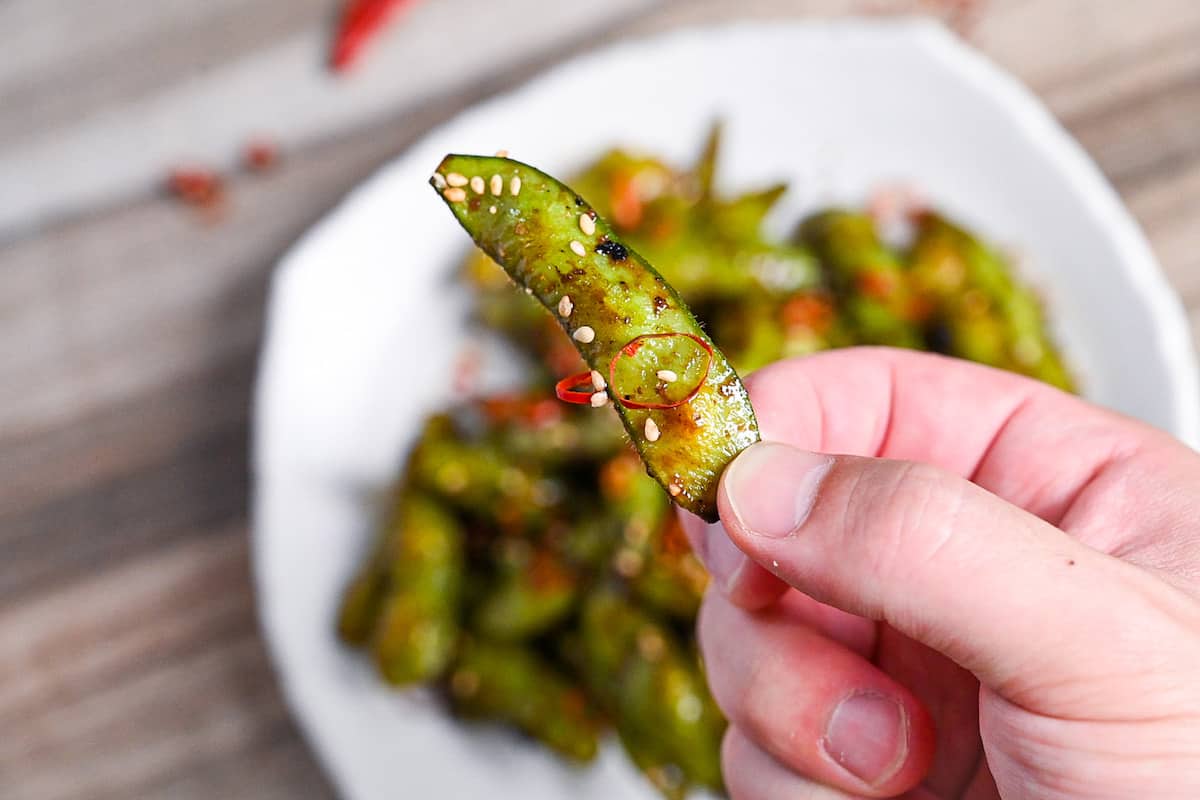
FAQ
Edamame were introduced to Japan from China, hand-in-hand with rice cultivation. It is not known when edamame (immature soybeans) were first consumed as food, but it is said that they may have been consumed as early as the Nara (710-784) or Heian periods (784-794).
After that, during the Edo period (1603-1867), these young soybeans, still attached to their branches, started to be called “Eda (branches)” and “Mame (beans)”, and were a popular fast food, sold freshly boiled.
It’s worth noting here that edamame begins to lose flavor once separated from the branch. Therefore, for the best flavor, it’s best to purchase edamame still clinging to its branches, with beans that are full and plump.
Despite being typically sold in their pods, edamame is consumed by only eating the beans inside, not the pods. The serving methods for edamame are diverse, often seen as an appetizer, a snack, or even a side dish with a glass of beer.
When it comes to the usual way of consuming edamame, the process is simple yet unique. You hold the pod to your mouth and gently apply pressure between the beans using your teeth. This action effectively slides the pod through the teeth, extracting the tender soybeans inside and transferring them to your mouth. While the exterior flavors won’t directly season the beans, your tongue and teeth will undoubtedly catch these flavors, adding a dimension to the overall tasting experience.
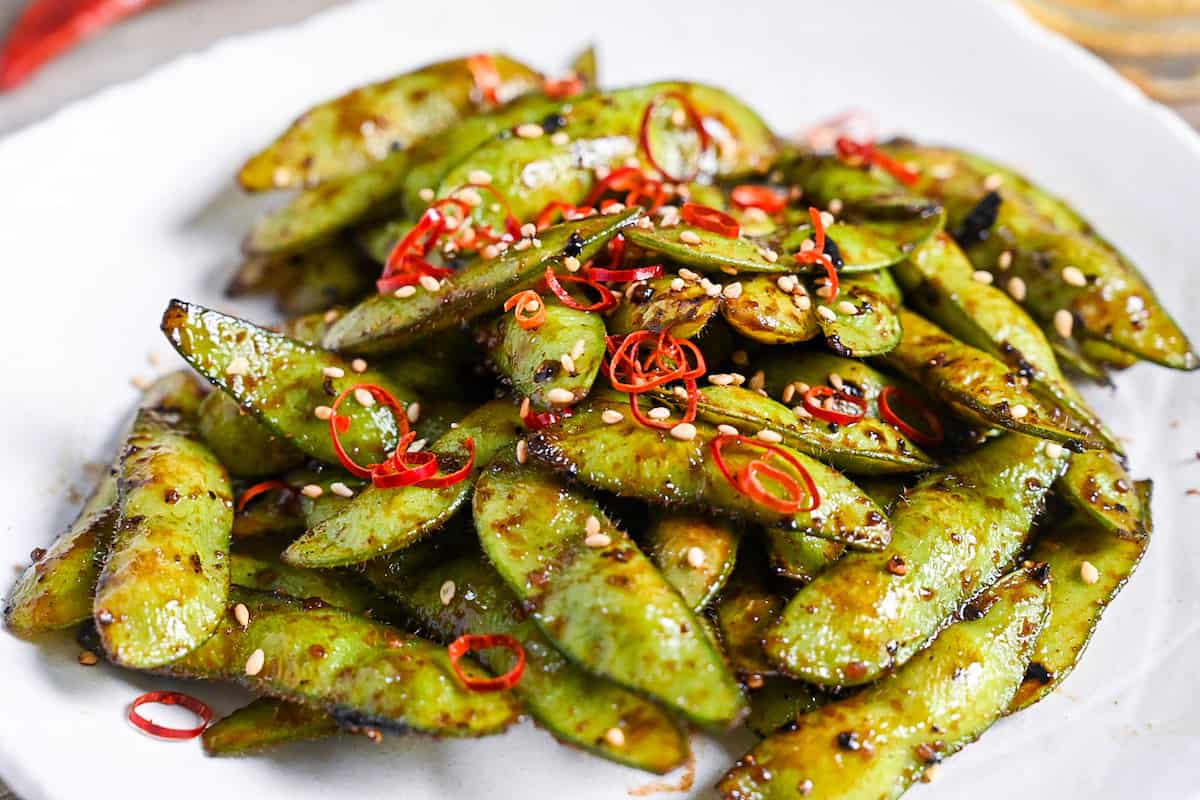
I hope you enjoy this Stir-fried Edamame recipe! If you try it out, I’d really appreciate it if you could spare a moment to let me know what you thought by giving a review and star rating in the comments below. It’s also helpful to share any adjustments you made to the recipe with our other readers. Thank you!
More Home Izakaya Recipes
- Agedashi Tofu (Japanese Deep Fried Tofu)
- Japanese Potato Salad (Izakaya Style)
- Chicken Karaage (Crispy Japanese Fried Chicken)
- Salted Cabbage (Yamitsuki Cabbage)
You can also find more Izakaya-style Tapas Recipes here!
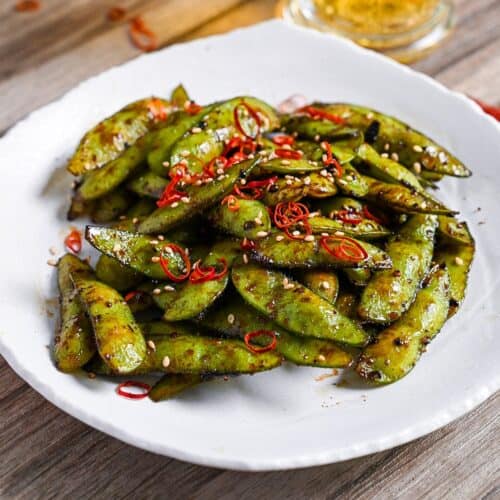
Stir-fried Edamame (with Garlic and Oyster Sauce Glaze)
Ingredients
- 10 g salt for cooking water
- 1000 ml water
- 200 g edamame in pods
- 8 g salt for edamame (4% of edamame weight)
- 1 tsp toasted sesame oil
- 2 tsp oyster sauce
- ½ tsp grated garlic or garlic paste
- ¼ tsp ground black pepper
- dried red chili pepper thinly sliced – optional
- toasted white sesame seeds optional
My recommended brands of ingredients and seasonings can be found in my Japanese pantry guide.
Can’t find certain Japanese ingredients? See my substitution guide here.
Instructions
How to Cook Raw Edamame (If your edamame are pre-cooked, please skip to frying)
- Add 1000 ml water and 10 g salt to a pot and bring it to a boil over a medium heat.

- While you're waiting for the water to boil, wash 200 g edamame and cut off the ends with scissors.

- Place them in a large bowl and rub 8 g salt over the surface to exfoliate and remove the small hairs.

- Once the water is boiling, add the edamame to the pot and cook for 5-7 minutes. (If you are using frozen preboiled edamame, boil for 1-2 minutes straight from frozen.)

- Once cooked, pour into a sieve to drain and shake to remove the excess water.

Frying in the glaze
- Heat a frying pan on medium. Once hot, add 1 tsp toasted sesame oil and the boiled edamame.

- Add 2 tsp oyster sauce and ½ tsp grated garlic, and stir fry for 3 minutes.

- Turn off the heat and sprinkle with ¼ tsp ground black pepper.

- Mix thoroughly and serve with a sprinkle of dried red chili pepper or toasted white sesame seeds and enjoy!

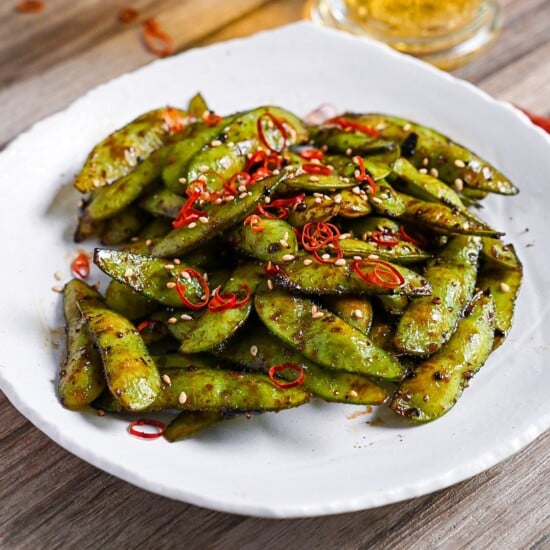



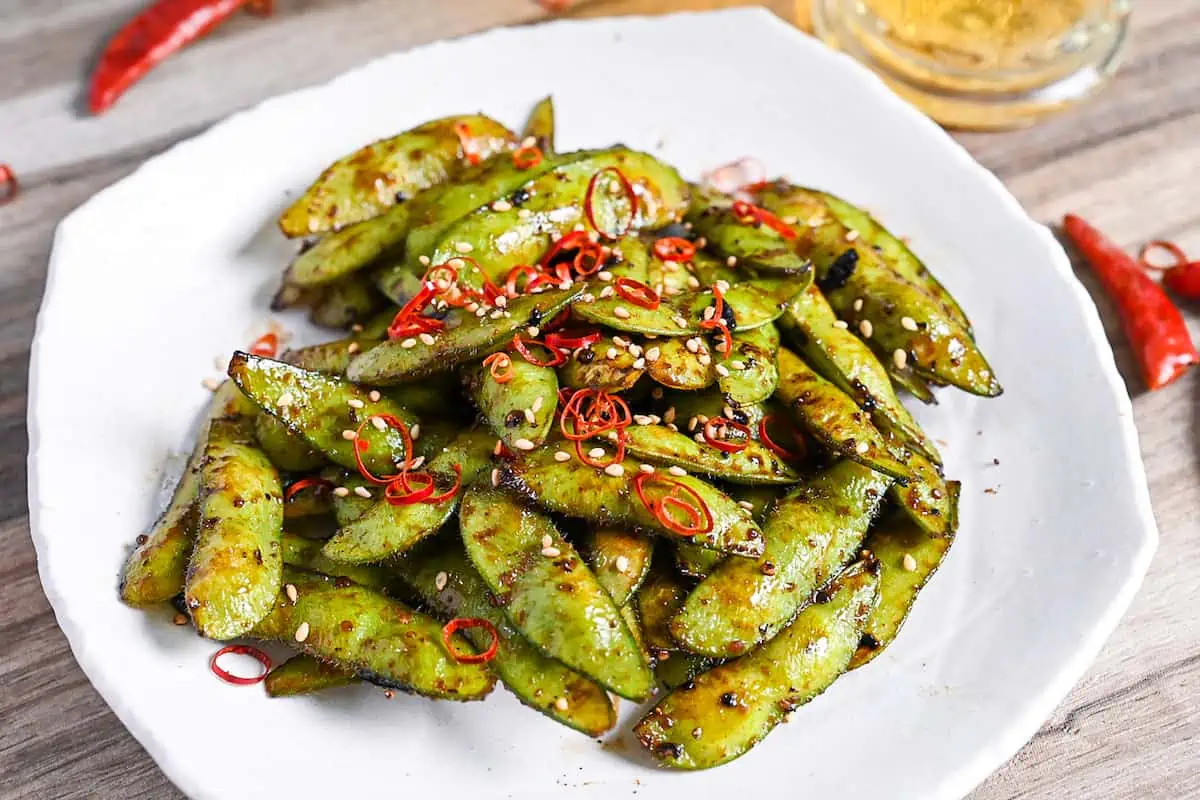
I made this today and it was sooo good omg! I will be making this a bunch of times 🙂
Thank you so much!